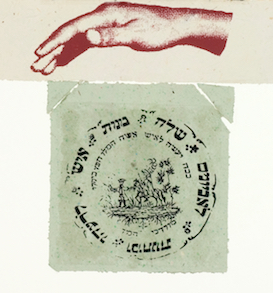Jews and Words, a Duet
DOI:
https://doi.org/10.17851/1982-3053.11.20.276-288Keywords:
Amos Oz, Fania Oz-Salzberger, Jewish ConditionAbstract
Jews and words, by the novelist Amos Oz and his daughter, historian Fania Oz-Salzberger, presents features that call attention to: a) Although the writer is the most prolific author in Hebrew, this book was written in English; b) Apart from a large fictional work, Amos has already published five books of essays, dealing with the Palestinian question, the difficulties of relations between Jews and Arabs, obstacles to peacemaking, problems between different groups of Jews in Israel; this book, which the authors refer to as an “essay,” is perhaps best referred to as a work of dissemination; c) If Amos had already published about thirty books, Fania had only two copyrighted works; d) Finally, the experience of co-authorship has provided them with a complex relationship, in which can be found “some residues of a dialogue” but also “intergenerational conflict, differing gender perspectives, or the subtle skirmishes of fiction and non-fiction.” This paper reflects on the work in focus, emphasizing the issues raised by co-authorship, seen as a duet, two voices that usually sound in unison, but sometimes dissociate and at other times converge. These outbursts appear in passages such as “The Web, as the historian among us keeps trying to persuade the novelist among us, [...]” or “For a long time, the historian among us thought that the novelist among us had invented this text-turning trick, this subversive little yod.” In this approach, we think that the authors describe the Jewish people as a kind of orchestra, with different voices, different timbres, different tunings, and one which does not have a conductor. Also worthy of attention is the relative weight of the authors’ contribution: the complexity of each voice’s score and the possibility of one voice stifling the other. In the simultaneity of several pairs, father-and-daughter, writer-and-historian, man-and-woman, what importance each relationship acquires vis-à-vis the others.
Downloads
References
AVINERI, Shlomo. Nordau: Les juifs et la crise de la civilization occidentale. In: ______. Histoire de la Pensée Sioniste: les origines intellectuelles de l’État Juif. Trad. do inglês Erwin Spatz. Paris: Éditions Jean-Claude Lattès, 1982. p. 143-156.
BEN-SASSON, H. H. The Middle Ages. In: ______. (Org.) A History of the Jewish People. Trad. George Weidenfeld. Cambridge, Massachusetts: Harvard University Press, 1997. p. 385-723.
CASH, Debra. Jews and Words: More Than Tongue Can Tell. The Arts Fuse, Boston, Dec. 12, 2012.
HALEVI, Iehudá. O Cuzarí. Trad. Paulo Rogério Rosenbaum. São Paulo: Editora Sêfer, 2003.
JOHNSON, Paul. A History of the Jews. New York: Harper Perennial, 1988.
KANFER, Stefan. The Lower-case Jew. Moment Magazine, Washington, March-April 2013.
KIRSCH, Adam. Are books all we have left? Yale’s New Posen Library of Jewish Culture and Civilization and the Question of Where Jewishness Lies Today. Tablet Magazine, New York, January 31, 2013.
KOESTLER, Arthur. Os khazares: a 13ª tribo e as origens do judaísmo moderno. Trad. Fernando Klabin. Rio de Janeiro: Relume Dumará, 2005.
OZ, Amos, OZ-SALZBERGER, Fania. Jews and Words. A Companion Volume to the Posen Library of Jewish Culture and Civilization. New Haven & London: Yale University Press, 2012.
OZ, Amos, OZ-SALZBERGER, Fania. Os judeus e as palavras. Trad. George Schlesinger. São Paulo: Companhia das Letras, 2015.
WIRTH-NESHER, Hana (Org.). What is Jewish Literature. Philadelphia: Jerusalem: The Jewish Publication Society, 5774/1994.
Downloads
Published
How to Cite
Issue
Section
License
Os direitos autorais pertencem exclusivamente aos autores. Os direitos de licenciamento utilizados pelo periódico é a licença Creative Commons Attribution 4.0 (CC BY 4.0): são permitidos o compartilhamento (cópia e distribuição do material em qualquer meio ou formato) e adaptação (remix, transformação e criação de material a partir do conteúdo assim licenciado para quaisquer fins, inclusive comerciais.






